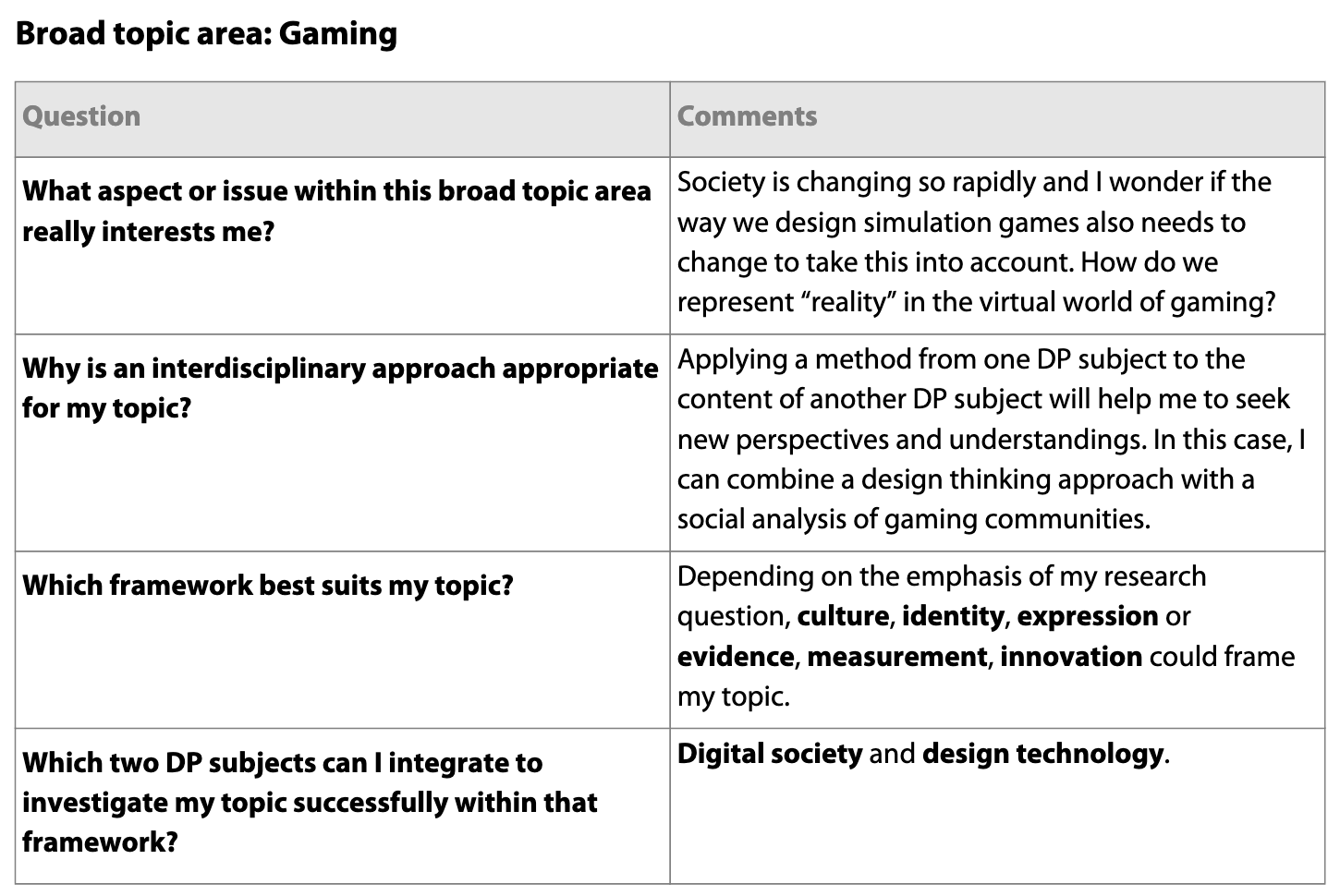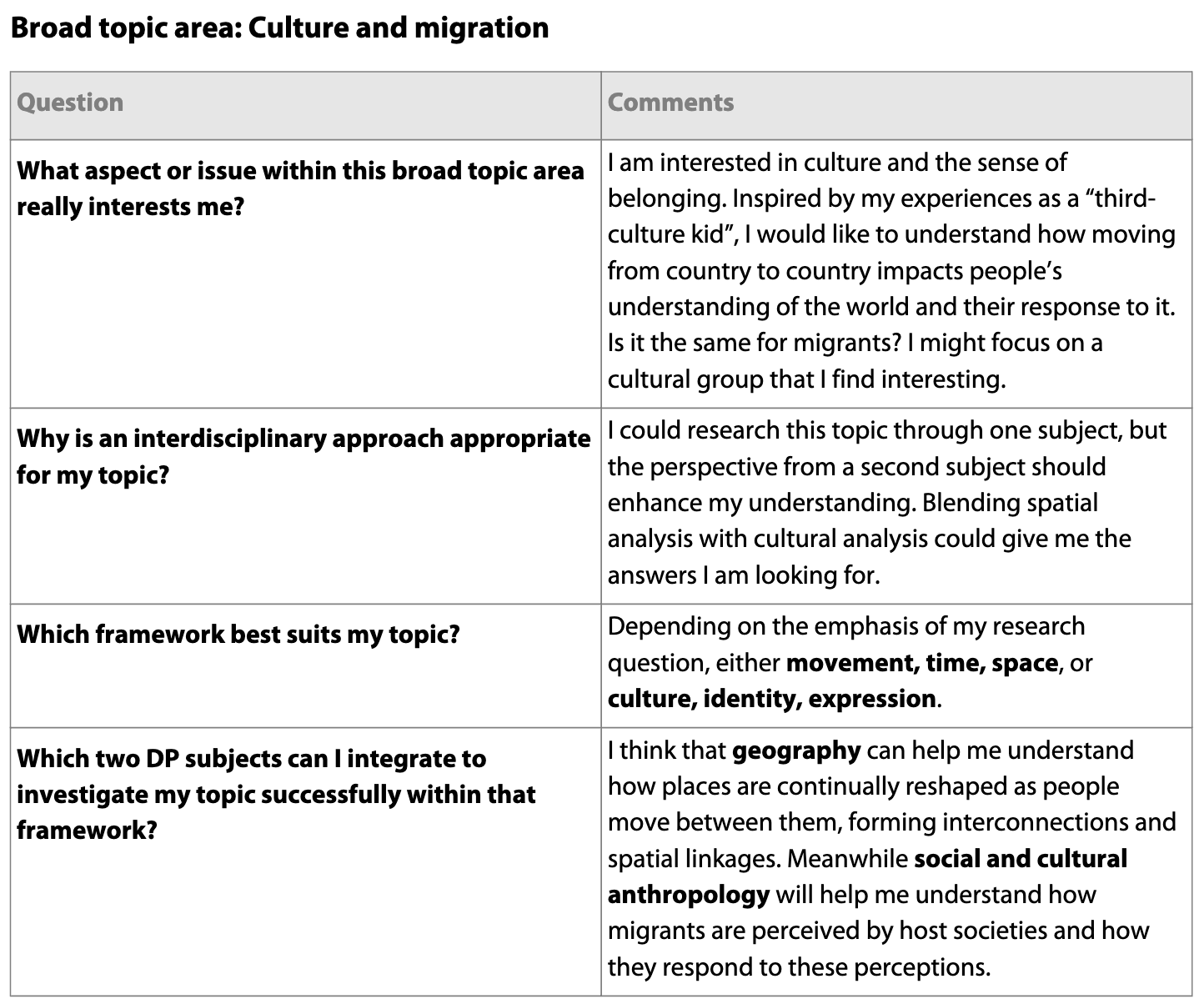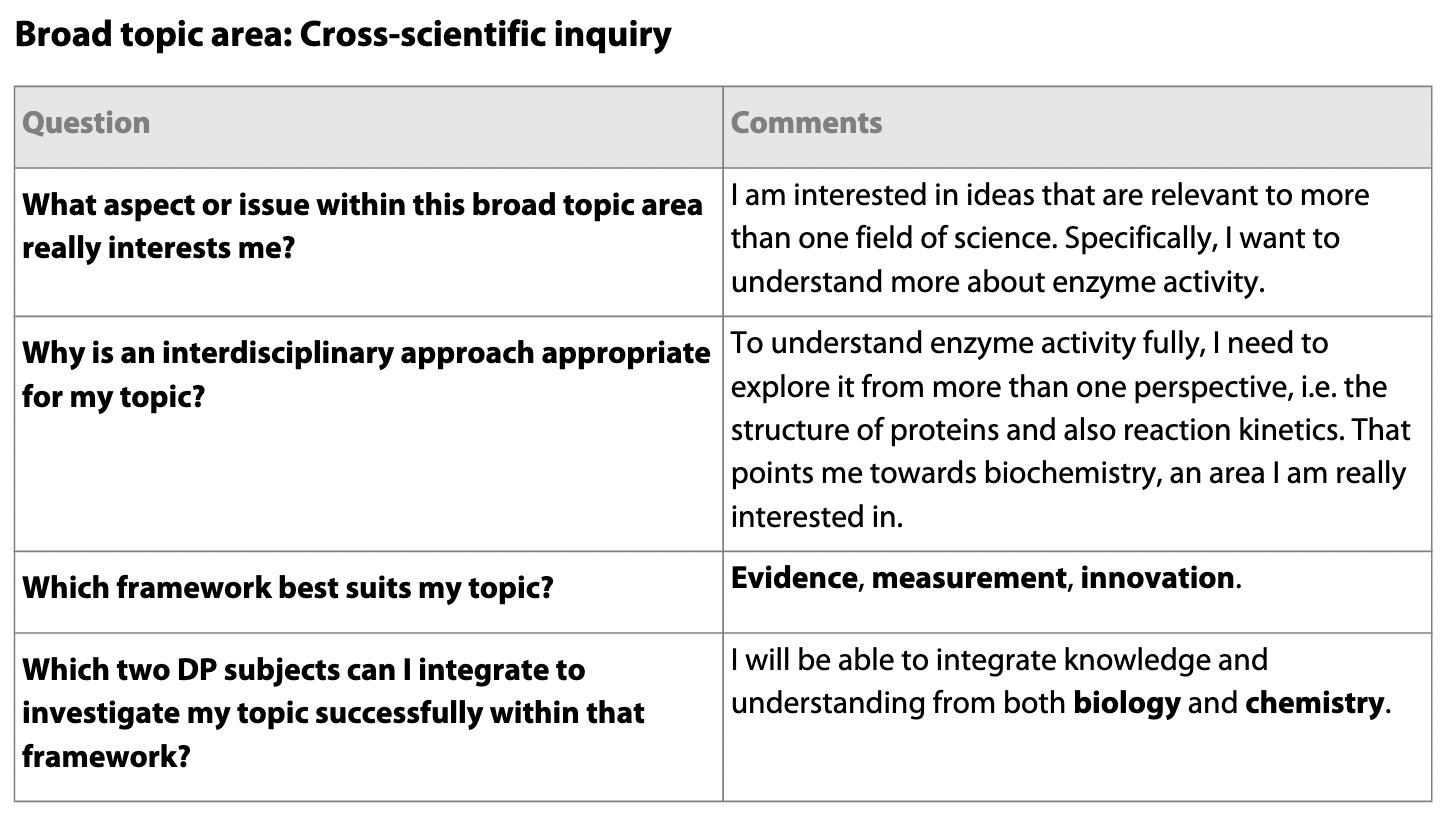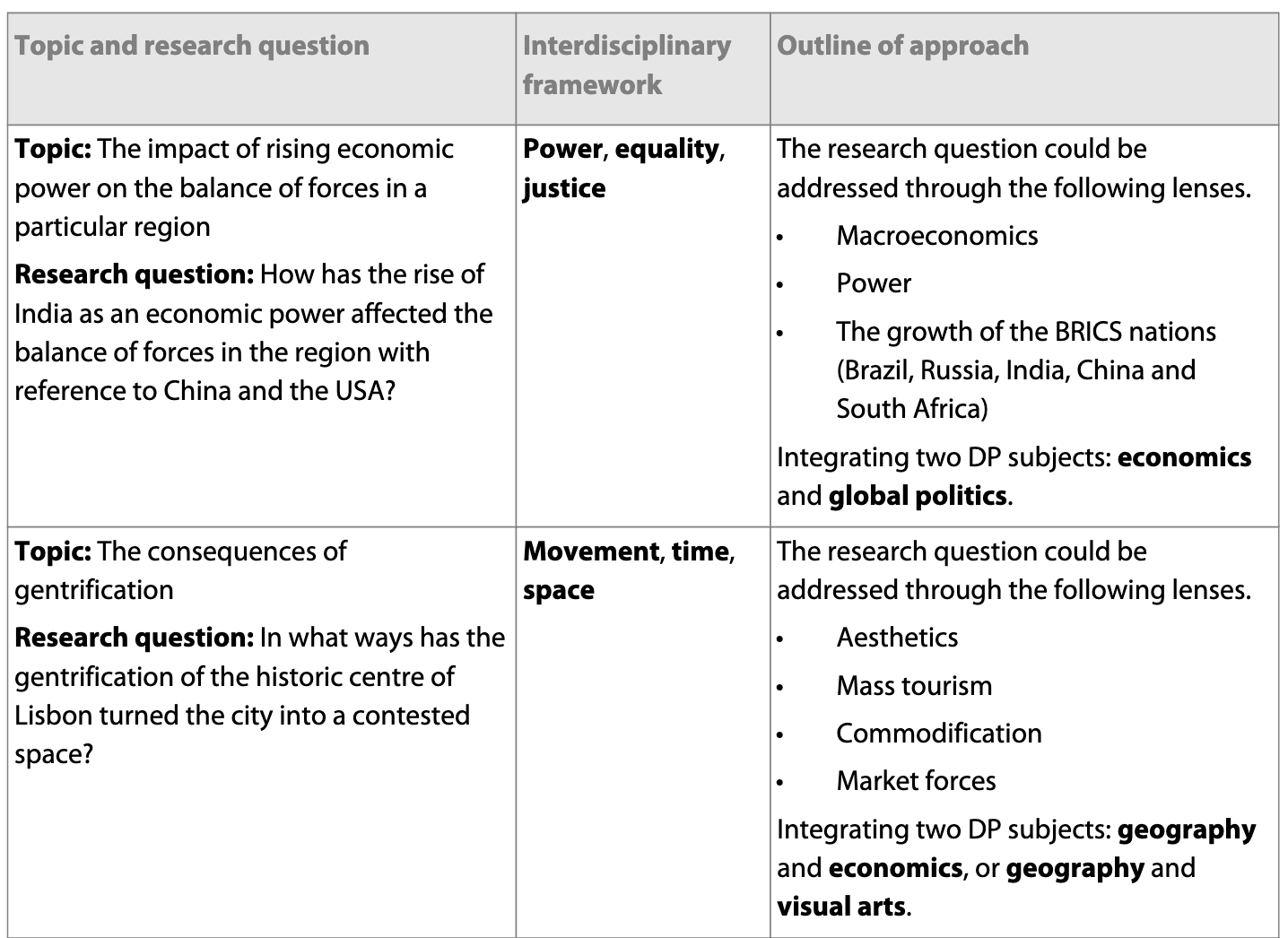
Updated, Sept 2025

Writing an Interdisciplinary EE
There are two components and you may choose these in the order that makes most sense to you.
You might first choose TWO of your DP Courses / subject areas
OR, you might first choose ONE area of the "flower" Framework above
Either way, your EE will combine TWO subjects and ONE framework area into a narrow topic and eventually a focused research question
2 Subjects + 1 Framework area -->> One topic -->> One RQ
Selecting the Topic: Ideas within the "flower" Framework to spark your interest
Power, Equality, Justice:
Culture, Identity, Expression:
Movement, Time, Space:
Evidence, Measurement, Innovation:
Sustainability, Development, Change:
Finalizing the Topic
Once you are engaged by an idea, examine your thinking to choose a specific topic. You will probably do some preliminary reading around your topic area to explore what's possible.
Consider:
Finalizing the Topic, Example 1:
 Example 2:
Example 2:
 Example 3:
Example 3:
 See more examples on page 24 of the EE Guide
See more examples on page 24 of the EE Guide
Research Questions
The Research Question (RQ) should...
Interdisciplinary Research Question Examples
 See more ideas beginning on page 30 of the EE Guide
See more ideas beginning on page 30 of the EE Guide
The Interdisciplinary EE uses the same rubric as the Subject-Specific EE
Review the general assessment criteria in the Assessment Tab first.
Then review the descriptors below, specific to the INTERDISCIPLINARY EE, to see what to focus on.
Five Criterion: Full marks = 30 points
Criterion A: Framework for the Essay
Criterion B: Knowledge & Understanding
Criterion C: Analysis & Line of Argument
Criterion D: Discussion & Evaluation
Criterion E: Reflection